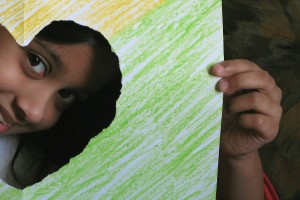 I had to have enough conviction for the whole family when I knew it was depression. That effort on top of the grief, guilt, and personal disappointment was so draining, I couldn’t do anything beyond the naming. I felt helpless, and was silent.
I had to have enough conviction for the whole family when I knew it was depression. That effort on top of the grief, guilt, and personal disappointment was so draining, I couldn’t do anything beyond the naming. I felt helpless, and was silent.
As has been true in so many areas of my life, it was a story that brought clarity and gave me the images and language to move forward. Bearskin, a picture book illustrated by Trina Schart Hyman, crossed our collective laps at this very opportune time.
The title character is raised by a bear, and early in the story he chooses to fight a dragon (“I will go myself if nobody better is to be found.”). The interesting thing is that his Mama Bear does not fight for him. She’s not that sort of mama bear.
She has raised him on bear milk (making him strong), and before his fight, she provides him with armor and weapons, but then he faces the dragon on his own.
I remembered the dragon that stalks me.
Recognizing that it was now going after my kids, my first response was fear, because I knew I would not be able to fight the dragon for them. Even if I had unlimited strength rather than my present weakness, there is not enough “environmental shaping” or help I can give them to keep the dragon away. It attacks from inside them.
Somehow I had to train them. I had to make them strong. And how could I do that when I can’t slay my own dragon?
(Read the whole article at Wyn Magazine)



 One of the main dichotomies I run across is the war between Feeling and Thinking (shorted in many discussions to F & T).
One of the main dichotomies I run across is the war between Feeling and Thinking (shorted in many discussions to F & T).
 When you go to counseling for the first time, it’s useful—for you and the therapist—to know why.
When you go to counseling for the first time, it’s useful—for you and the therapist—to know why.
 Co-written by me and
Co-written by me and